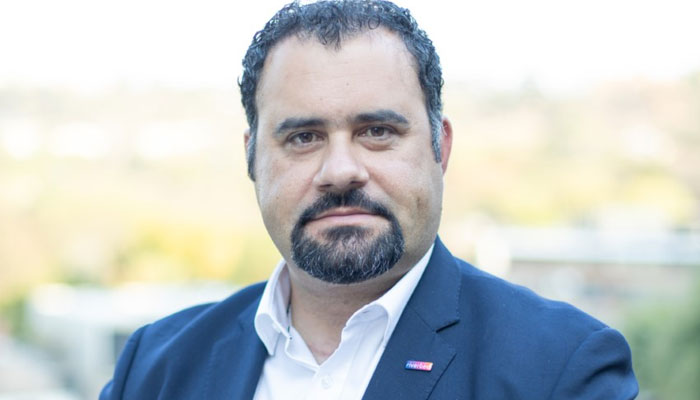“2023 will be another year of change for the channel industry but with IT budgets set to grow, so too will the opportunity for revenue growth for those channel organisations that are ready to capitalise on the opportunities that the trends present.”
Ghassan Abou Rjeily, Regional Channel Sales Manager – Emerging EMEA, Riverbed
Whilst economic uncertainty continues, IT budgets are one of the few areas earmarked for growth this year with Gartner forecasting a 5.1% increase in worldwide IT spend. Technology will empower businesses to pursue the opportunities that remain present, and as competition for these heats up, organisations will turn to their channel partners as they seek to create a decisive edge. Partners must therefore rise to the occasion, and those that are aware of evolving market dynamics, will be able to strategically set themselves up for success. Here are some of the trends Ghassan Abou Rjeily, Regional Channel Sales Manager – Emerging EMEA, Riverbed shared with Channel360MEA, channel players should ensure they account for as they lay out their business plans for 2023.
What trends in 2023 (in particular) are expected to revamp the MEA Channel Ecosystem?
Delivering Value by Minimising Costs
In the years gone by, industry experts have spoken at length about the need for channel partners to shift from box moving to value addition. Value of course can mean different things to different organisations but in the current economic environment one thing is certain – all organisations will perceive the ability to reduce costs as a key form of value addition. Channel partners will need to help customers control or curtail IT spending, without impacting their ability to innovate.
The large upfront capital costs associated with traditional IT deployment models will become increasingly infeasible, replaced instead with a growing demand for pay-as-you-go schemes. We have already witnessed a surge in the popularity of cloud services in the Middle East in recent years and partners must now work to stay relevant in the cloud ecosystem. They can do this by combining cloud offerings from multiple vendors and packaging their value-add services around these to create compelling offerings that can be easily consumed by end customers.
Unified Observability Will Help Turn Threat into Opportunity
The relevance of channel partners in the era of the cloud has been long debated. The cloud marketplaces operated by hyperscalers have become the preferred procurement model for customers, empowering them to circumvent the channel, and even vendor sales teams altogether. It is natural then for channel players to be wary of the shift to cloud.
However, enterprise businesses are unlikely to place all their eggs in one basket. Instead, we see such organisations adopt a ‘best of both worlds’ approach – running some workloads in public clouds, maintaining others in on-premise or edge data centres, and consuming additional services via the SaaS model. This has the potential to create an unprecedented level of complexity as silos emerge, causing performance issues to become harder to pinpoint and address.
Through 2022, we saw Unified Observability emerge and take hold as a new technology category. Unified Observability solutions inject more automation and visibility into the increasingly complex network, including remote and hybrid work environments to help free up IT teams to work on more strategic IT initiatives at a time when IT resources are being stretched thin.
Considering ongoing monetary investment required at partners’ end, how can they at the same time save on cost of operation?
The one line answer is, “They May Seek to Combine Strengths”.
Now let me explain, as channel partners look to enhance efficiencies and reduce the cost of operations, we can expect to see mergers taking place between channel organisations. This will enable them to share some core functions such as HR, procurement, finance and more, and also enhance their credit facilities to clients, thereby allowing them to bid for larger projects. By unifying operations, partners with complementary skill sets and solution portfolios will also be able to capitalise on the market demand for comprehensive solutions, delivered by a single technology provider.
What potential Managed Services hold for the partners? How can they successfully be a part of it?
The tech talent crunch remains a very real and significant challenge facing the IT industry. Enterprises in the region are not exempt and through 2023, they will need to find creative solutions to optimising the outputs of overstretched in-house IT teams.
The opportunity for the channel is two-fold. Partners that have long been moving away from margin-based selling to value-based selling will have already developed considerable technical proficiency within their ranks. This will afford them the ability to diversify their business with the introduction of Managed Service offerings. Partners that have invested in their people, will be able to create new revenue streams via a manpower-as-a-service model, granting customer access to precious skilled resources without having to navigate the complexities of hiring, training, and employee retention.
Channel players will also have the opportunity to position technologies such as Unified Observability that democratise IT team’s knowledge so Level 1-2 staff can solve more problems without escalations. By reducing mean time to resolution, precious resources can ‘shift left’ and redirect their efforts on high-value initiatives that drive business outcomes.
What will be the potential markets (countries) in 2023?
In the Middle East and Africa, countries such as the UAE, Saudi Arabia, Egypt and South Africa have all traditionally been the focus of vendors and channel partners alike. While the demand for IT solutions in these nations will continue to grow, tremendous potential will be found in once overlooked territories such as Nigeria, Kenya, Ivory Coast, Ghana, Jordan, Tunisia, and Morocco.
To capitalise on the opportunities that these markets provide, channel partners will need to invest in developing and strengthening their on-ground teams and supply chains. First movers will stand to gain a significant advantage as they draw on their expertise from neighbouring territories to make rapid inroads into key customer accounts in these emerging markets.

